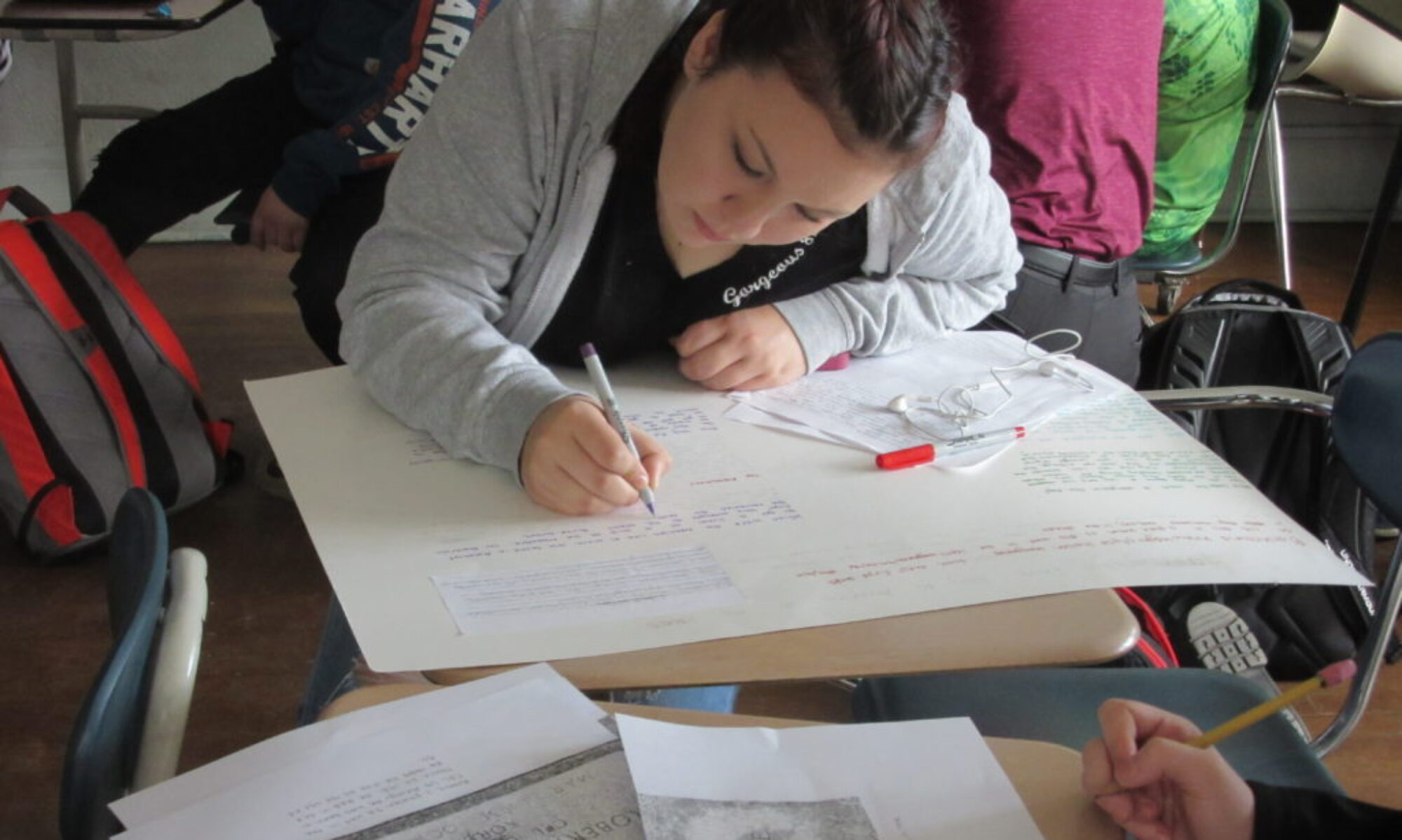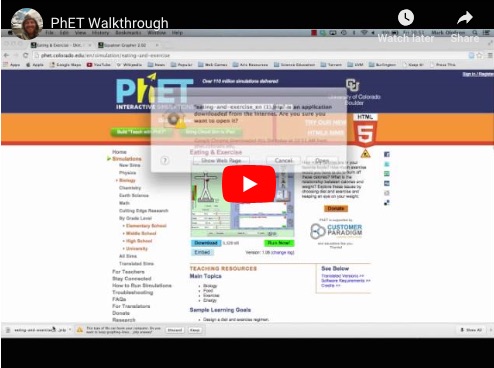An augmented reality periodic table
One of our partner educators, Brian Wagner, teaches eighth grade science at Harwood Union Middle School, in Moretown VT. This past spring, he used Aurasma with his students to bring elements of the periodic table to life in a gallery walk.
The Rube Goldberg Challenge was not a good fit for the Aurasma app as a means of documenting thinking over time, but it proved to be a good tool for students to teach each other about the periodic table.
In essence, students jig-sawed their knowledge about specific sections of the Periodic Table to create a larger perspective about the trends, patterns, and curiosities of table.
Memorizing the elements of the periodic table is a complete waste of time (a personal opinion but one generally recognized as valid).
Understanding the information stored in the table because of the way it is constructed unlocks chemistry at a deeper level. The author Sam Keane in his book The Disappearing Spoon writes that “…at its simplest level, the periodic table catalogs all the different kinds of matter in our universe, the hundred-odd characters whose headstrong personalities give rise to everything we see and touch. The shape of the table also gives scientific clues as to how those personalities mingle with one another in crowds….”
My objective for this activity is for students to begin to recognize the trends and personalities and teach each other about different sections using Augmented Reality. The assignment is presented in the attached file- The Periodic Table Assignment 2013
The students researched as per the assignment criteria and prepared a video presentation of their element group. They were allowed to create the video in 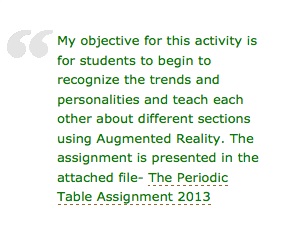 whatever manner they wanted- many did not want to be onscreen but talked through their information while writing it out on paper. Some used a chalk board for added effect. Others set it up as a news cast. Each group created a simple Aura (trigger) to activate the video.
whatever manner they wanted- many did not want to be onscreen but talked through their information while writing it out on paper. Some used a chalk board for added effect. Others set it up as a news cast. Each group created a simple Aura (trigger) to activate the video.
The Auras were placed around the middle school Gallery in their respective groups and an iPad was stationed at each of these areas to use for the video presentation. Students rotated throughout the gallery, watching each other’s videos and taking notes about each section. Initially I wanted each student group to prepare an annotated photo of a periodic table with the information they collected. This would act as a summarizing aspect to their learning. Unfortunately there was not enough time to go through the gallery walk and do the Skitch challenge. The following day we lost our Wi-Fi , the iPads were needed for other classes when it returned, and the opportunity was lost.
During the class time with no internet, students took a quick quiz about the periodic table. The quiz was used as a means to discuss their findings further and clear up misconceptions that arose during their research. There will be a follow-up summative quiz (using Socrative) to determine how much information has been internalized. That will be a separate post.
The use of the Aurasma app was received well by students for this activity. They saw the value in researching, outlining, and preparing a presentation that others would learn from.
Because their audience was a little bigger (the entire 8th grade) they took more time to prepare and shoot the video (many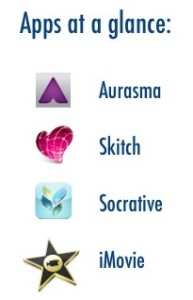 with multiple takes to get it right). Their personal creativity was valued and the questions that arose from their research made good conversations that would have been missing from a straight up lecture about the topic.
with multiple takes to get it right). Their personal creativity was valued and the questions that arose from their research made good conversations that would have been missing from a straight up lecture about the topic.
One of the drawbacks to the app was having to hold the iPad over the Aura while watching the video. However, one student figured out that by double tapping on the video while it was playing would take the video to full screen and allow it continue playing in any position. iMovie would also be a preferred video tool for making the videos more polished.
Unfortunately iMovie is not on our iPads yet, although one student convinced me to download it for him, where he proceeded to take three individual videos his group made into one smooth presentation.
Continue reading “Brian Wagner on: Aurasma and the Periodic Table”
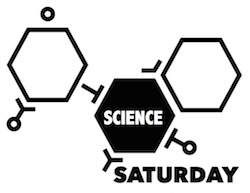 One of the challenges in science is to help students make connections from concepts to their real world. This can be a particular challenge in the field of chemistry. We talk about atoms, molecules, chemical reactions… but how does that connect with the things we see every day?
One of the challenges in science is to help students make connections from concepts to their real world. This can be a particular challenge in the field of chemistry. We talk about atoms, molecules, chemical reactions… but how does that connect with the things we see every day?